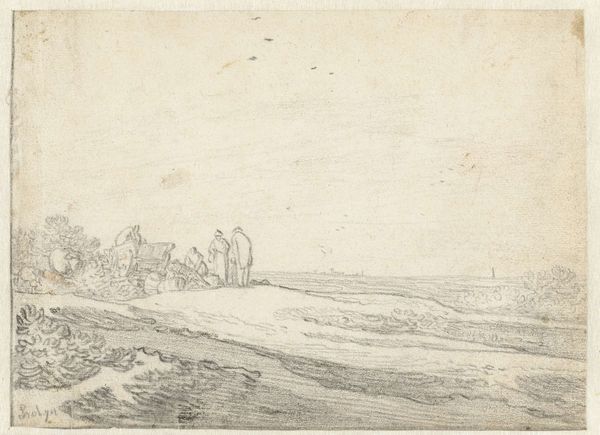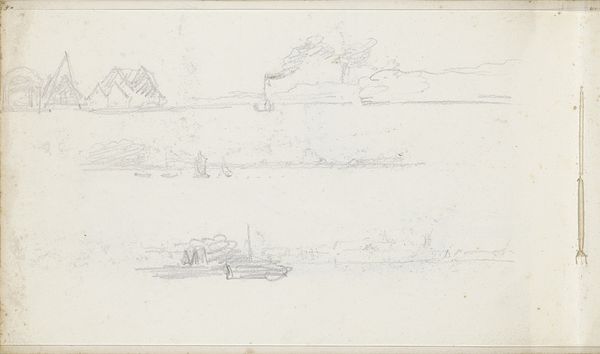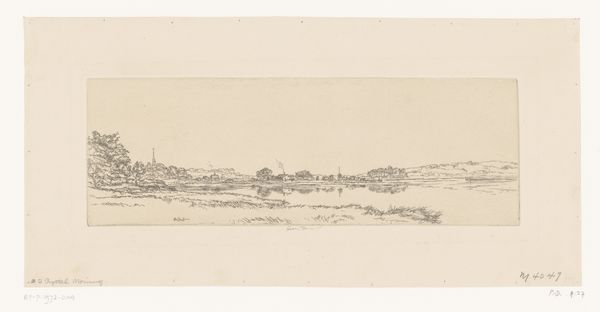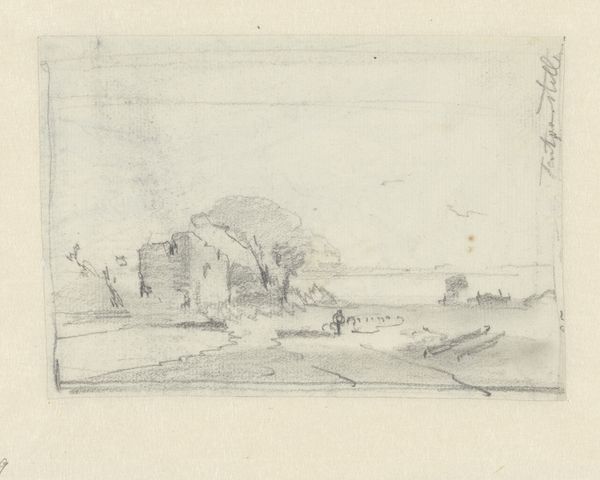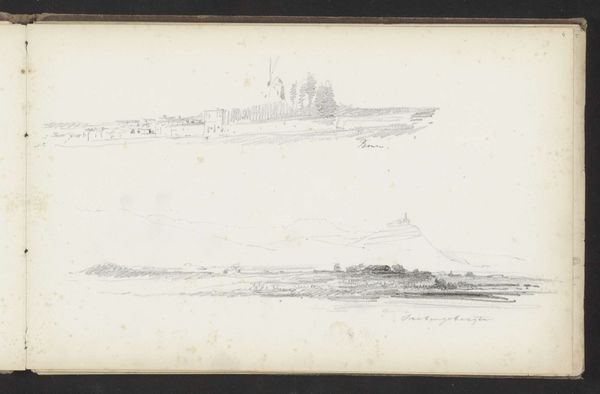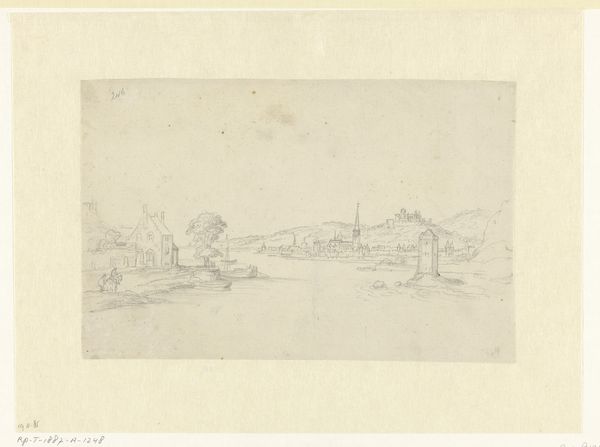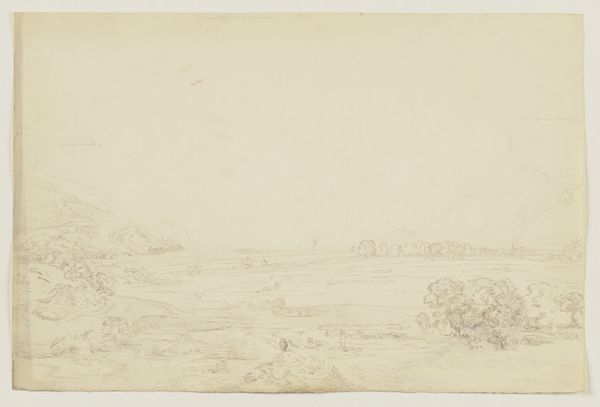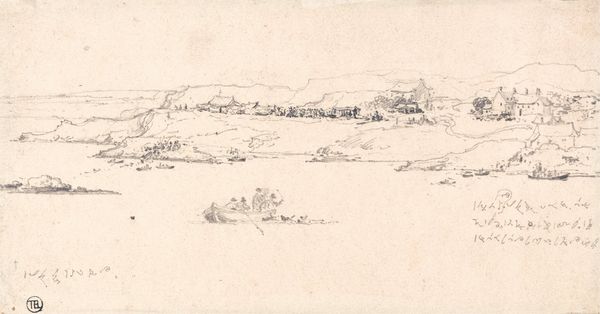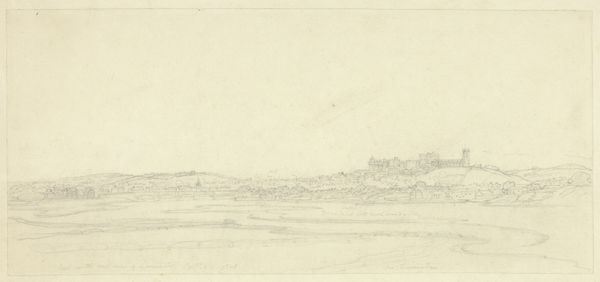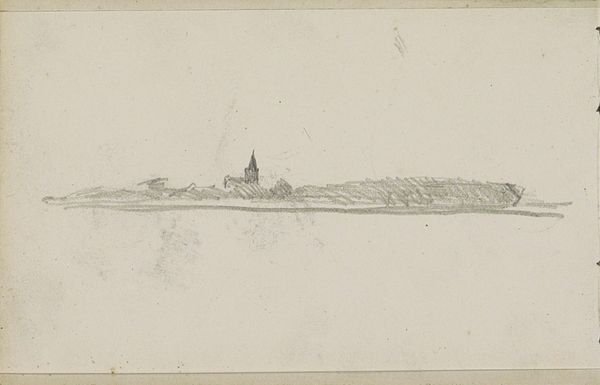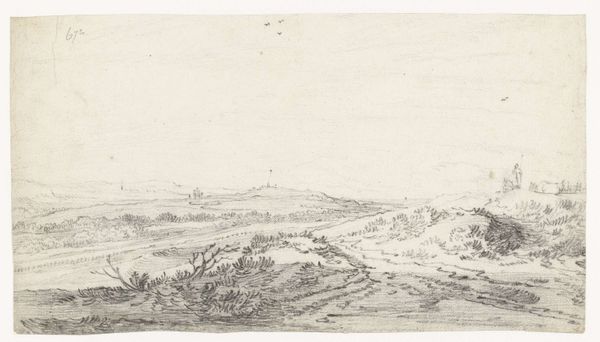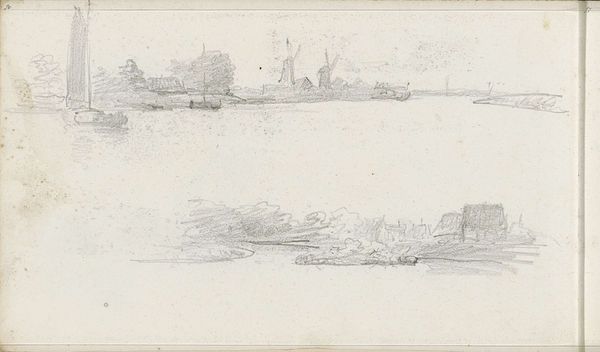
De Via Appia, naar het oosten, met de Torre di Selce en de Toraccio di Palombaro 1778 - 1839
0:00
0:00
hendrikvoogd
Rijksmuseum
drawing, pencil
#
drawing
#
neoclacissism
#
landscape
#
romanticism
#
pencil
Dimensions: height 271 mm, width 418 mm
Copyright: Rijks Museum: Open Domain
Editor: Hendrik Voogd’s pencil drawing, "De Via Appia, naar het oosten, met de Torre di Selce en de Toraccio di Palombaro," dating from around 1778 to 1839, presents such a stark and desolate scene. What do you see when you look at it? Curator: The very act of Voogd using readily available and relatively inexpensive materials like pencil and paper is telling. It speaks to a democratization of landscape art, moving away from exclusive, commissioned oil paintings for the elite. How do you see this choice of materials relating to the overall composition? Editor: Well, the pencil gives it a sense of immediacy, almost like a field sketch. It’s not grandiose. Curator: Exactly! Think about the social context. Voogd, a Dutchman in Rome, would have encountered a thriving artist community. He wasn’t simply capturing a picturesque scene; he was participating in a dialogue about the changing role of the artist and the value of landscape. The drawing, itself a relatively quick and reproducible medium, allowed for wider dissemination of images. Consider also the laborers who maintained the Via Appia, or whose taxes helped fund artistic endeavors, though they themselves likely could not access the art world. Editor: So you’re saying the drawing itself is almost a product, intended for a market, rather than just pure artistic expression? Curator: Precisely. And the ruins depicted become a resource, a subject ripe for artistic and economic exploitation. Did Voogd ever consider how his pursuit may mirror the economic systems already at work within the city he chose as a muse? Editor: That's a perspective I hadn't considered. I was so focused on the aesthetic qualities of the work, I never stopped to consider the socio-economic implications! Curator: Examining art through the lens of its material production and consumption gives us a richer understanding.
Comments
No comments
Be the first to comment and join the conversation on the ultimate creative platform.

